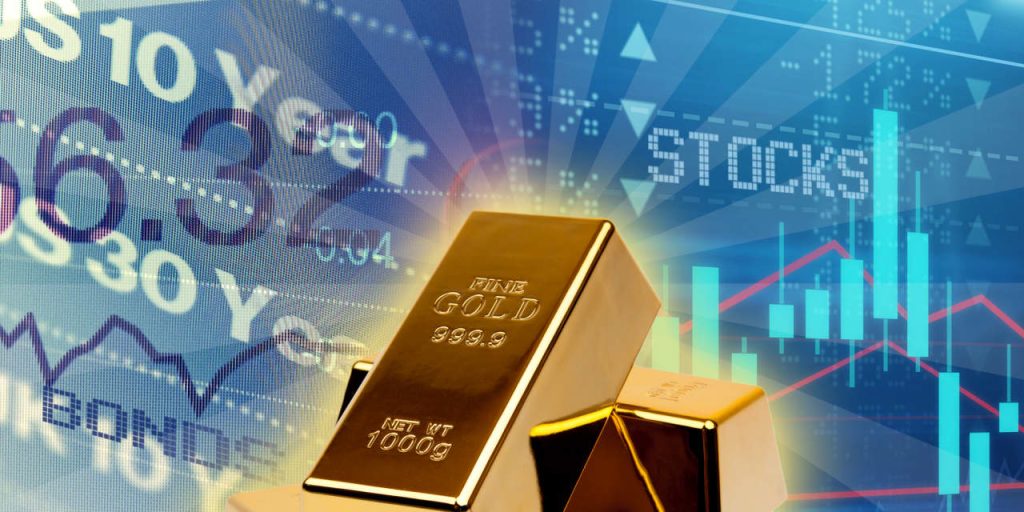No yield, no dividend, no problem?
That appears to be the case for gold when it comes to its performance against both stocks and bonds as the calendar flips ever deeper into the 21st century. The chart below from S&P Dow Jones Indices shows the relative performance of the yellow metal, as measured by Dow Jones Commodity Index Gold, versus the S&P 500
SPX,
between Dec. 31, 1999, and Dec. 29, 2023.
Unlike some stocks, gold — like other commodities — pays no dividends. Unlike bonds, it pays no coupon. That’s often described as raising the opportunity cost of holding gold versus assets that produce some sort of yield. Still, DJCI Gold, which is designed to track the market via futures contracts
GC00,
-0.34%,
has outpaced both since the turn of the millennium.
Going back to the start of the century, DJCI Gold produced a 7.8% annual return, compared to a 7% return for the S&P 500 during that time, said Brian Luke, head of commodities, real and digital assets at S&P Dow Jones Indices, in a blog post this week.
Adjusting for volatility, gold has provided slightly better risk-adjusted returns than stocks, with a Sharpe ratio of 0.48 versus 0.45 for equities, Luke wrote. The ratio compares the return on an investment with its risk.
Bonds aren’t even close when it comes to annualized returns. The iBoxx USD Overall Index, which measures investment-grade government and corporate bonds, has seen an average return of 4.1% since 1999, according to Luke, though its Sharpe ratio is slightly better at 0.89.
To be sure, stocks played catch-up in 2023, with the S&P 500’s stellar 26.3% return easily besting both bonds and commodities, including gold. The overall commodity index, the S&P GSCI, saw a return of negative 4.3%, with S&P GSCI Grains falling 15% last year and S&P GSCI Livestock flat amid falling inflation.
Gold, however, solidly outpaced the broader commodity index in 2023, with futures hitting a record high in December as DJCI gold posted a 12.8% return for the year.
Read the full article here



